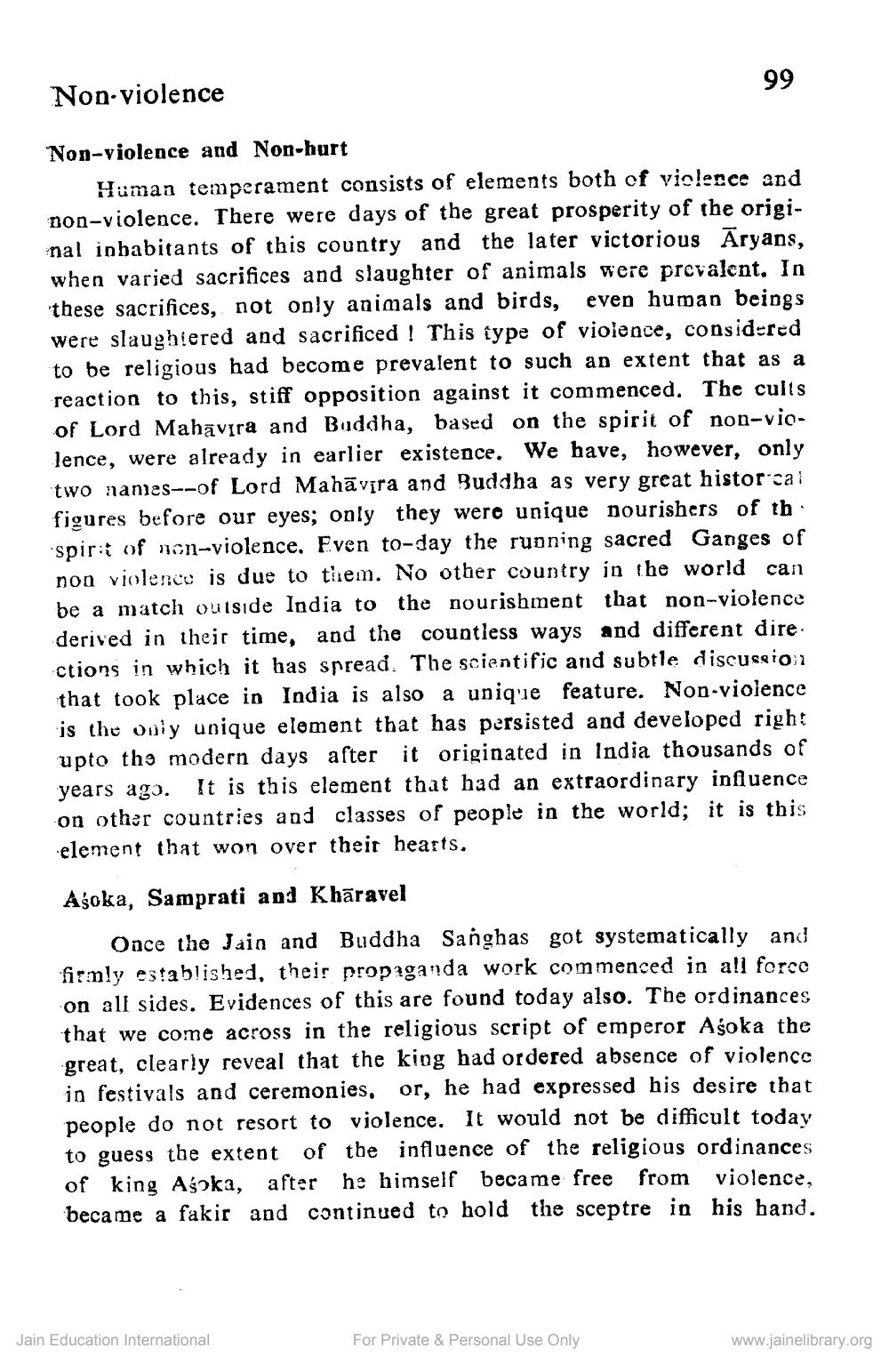________________
Non-violence
Non-violence and Non-hurt
Human temperament consists of elements both of violence and non-violence. There were days of the great prosperity of the original inbabitants of this country and the later victorious Aryans, when varied sacrifices and slaughter of animals were prevalent, In these sacrifices, not only animals and birds, even human beings were slaughiered and sacrificed ! This type of violence, considered to be religious had become prevalent to such an extent that as a reaction to this, stiff opposition against it commenced. The cults of Lord Mahavira and Buddha, based on the spirit of non-violence, were already in earlier existence. We have, however, only two namies--of Lord Mahāvīra and Buddha as very great histor sal figures before our eyes; only they were unique nourishers of th: spiri of non-violence. Even to-day the ruoning sacred Ganges of non violence is due to them. No other country in the world can be a match outside India to the nourishment that non-violence derived in their time, and the countless ways and different dire. ctions in which it has spread. The scientific and subtle discussion that took place in India is also a unique feature. Non-violence is the only unique element that has persisted and developed right upto the modern days after it originated in India thousands of years ago. It is this element that had an extraordinary influence on other countries and classes of people in the world; it is this element that won over their hearts.
Asoka, Samprati and Khāravel
Once the Jain and Buddha Sanghas got systematically and firmly established, their propaganda work commenced in all forco on all sides. Evidences of this are found today also. The ordinances that we come across in the religious script of emperor Asoka the great, clearly reveal that the king had ordered absence of violence in festivals and ceremonies, or, he had expressed his desire that people do not resort to violence. It would not be difficult today to guess the extent of the influence of the religious ordinances of king Ašoka, after he himself became free from violence, became a fakir and continued to hold the sceptre in his hand.
Jain Education International
For Private & Personal Use Only
www.jainelibrary.org




